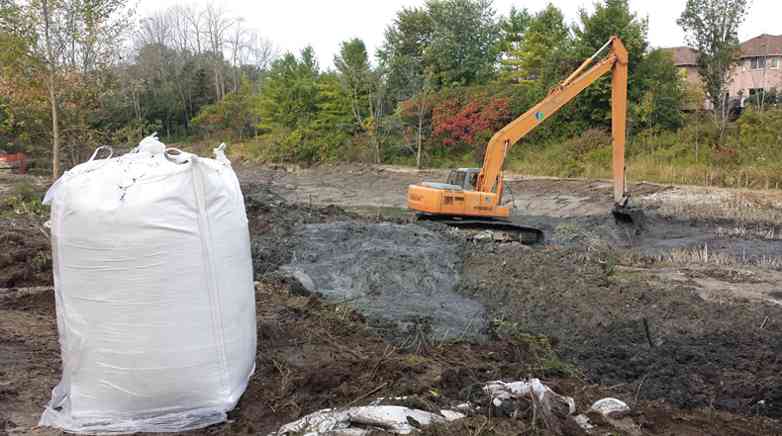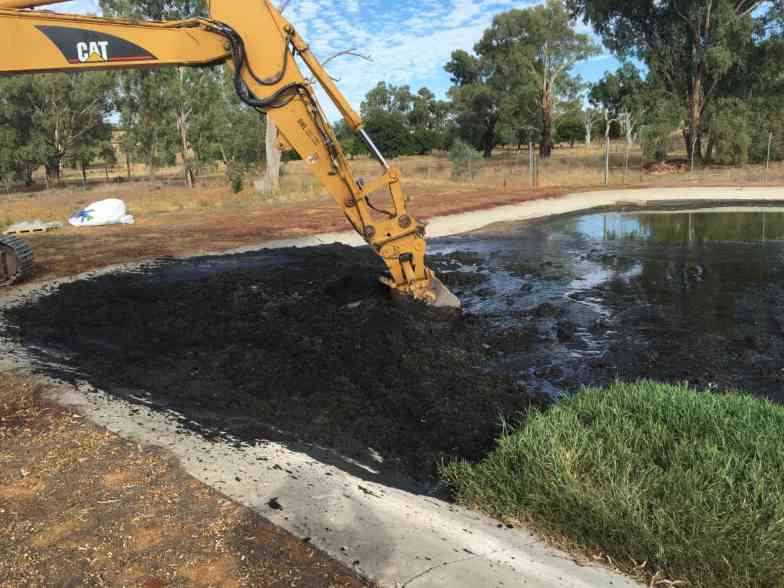Innovation in Stormwater Pond Maintenance
The ubiquitous stormwater pond…..purposefully built but now ignored and misunderstood.
The ponds you pass every day on your way to work or walking your dog in the evening are not typically spring fed, naturally occurring bodies of water left behind by receding mini glaciers from the last Pleistocene epoch. These ponds have been engineered in housing and commercial areas as a tool to manage water and capture particulate debris from snow melt and rain events. The size and volume of these stormwater ponds are determined by a number of factors, the most important of which is the proportion of impervious surfaces in the area – surfaces that won’t allow water penetration such as roads, driveways, parking lots and roof tops.

Area water flows into the stormwater pond with accompanying debris that settles on the bottom as sediment. Most of this sediment is sand, silt and clay from surface erosion, but it may also include other, less human-friendly constituents such as hydro carbons and salt. The pond acts as a filter to prevent this debris from getting into our natural water systems and has a positive impact on erosion by slowing the volume and velocity of water originating from impervious surface areas.
Ongoing maintenance is the key to the success of this passive water management tool. If the sediment is left to build up in the pond and is not removed at regular intervals, the stormwater pond can no longer function as it was designed.
This is where MetaFLO can help.
Sediment that has filled in the stormwater pond over time has a flowable and sludge-like consistency. This sediment can be treated with very low dosages of polymer-based solidification reagent to change the consistency of the sediment into a more soil-like texture. This dry material can then be easily excavated into dump trucks and removed from the pond site. Depending on pre-determined material characteristics, beneficial re-use of this material may also be an option.

The Ontario Ministry of the Environment, Conservation and Parks is collaborating with academic institutions and private industry to look at alternative utilization and landfill diversion. Further innovation in low impact developments to reduce the impact of hard, impervious surfaces are also being implemented including:
- Porous, permeable pavement that allows water to penetrate
- Green roof tops that absorb water
- Residential and commercial water collection systems that can be re-used for irrigation
With a focus on a broader spectrum of innovative water management tools and timely maintenance of existing stormwater ponds with solutions like sediment solidification from MetaFLO, we can have a positive impact on water quality.